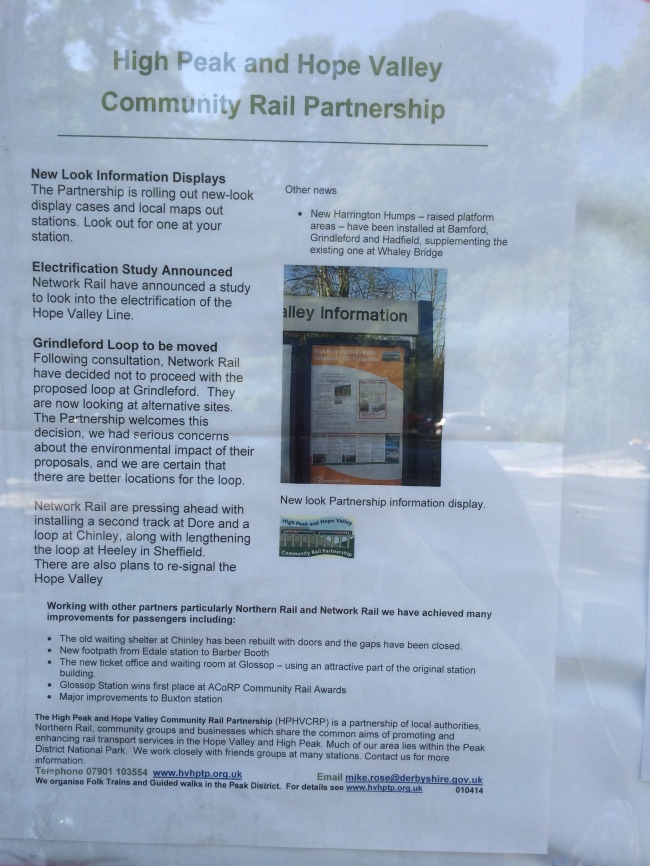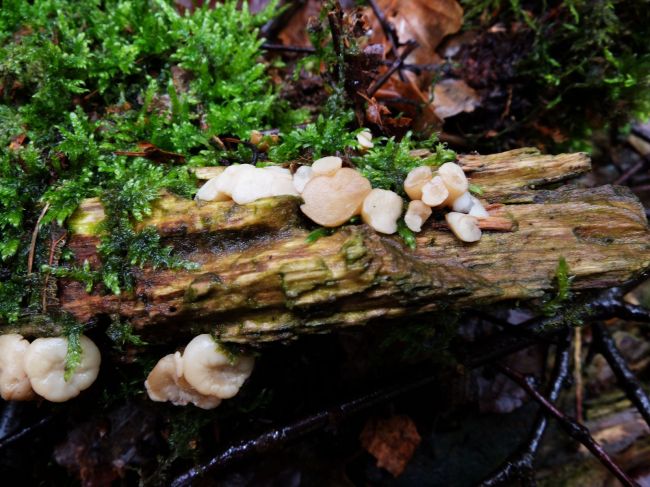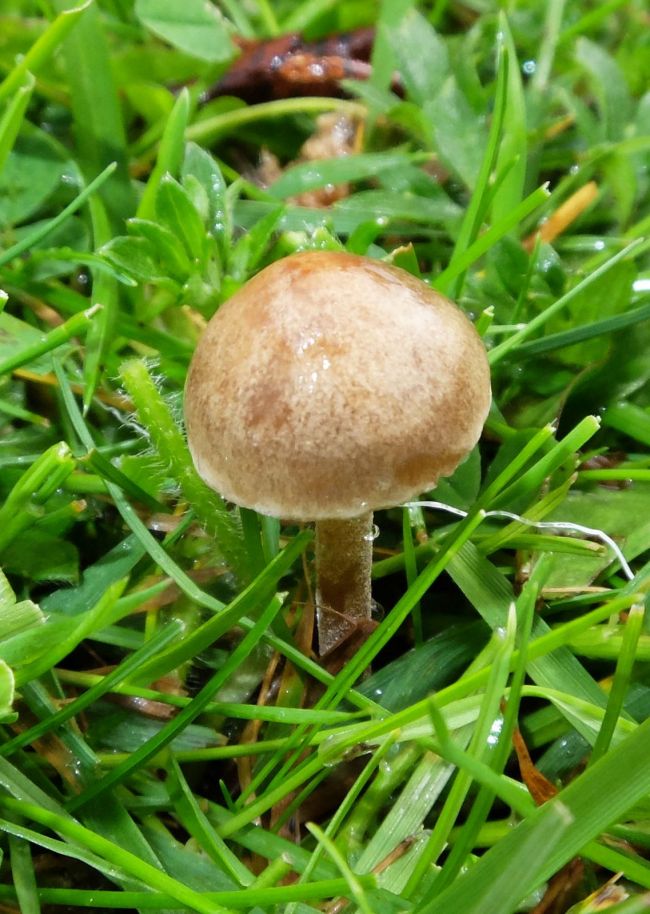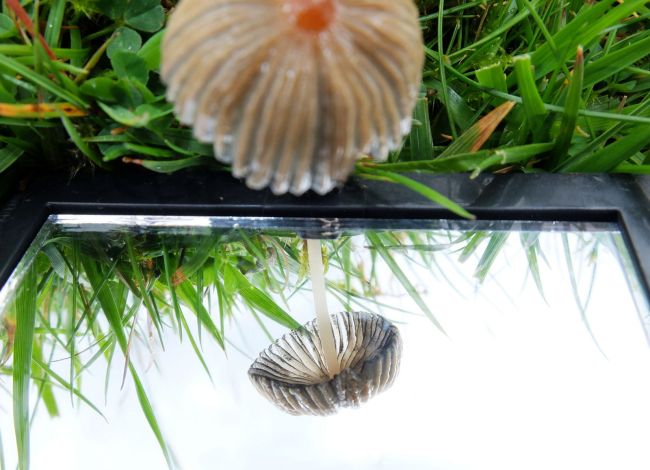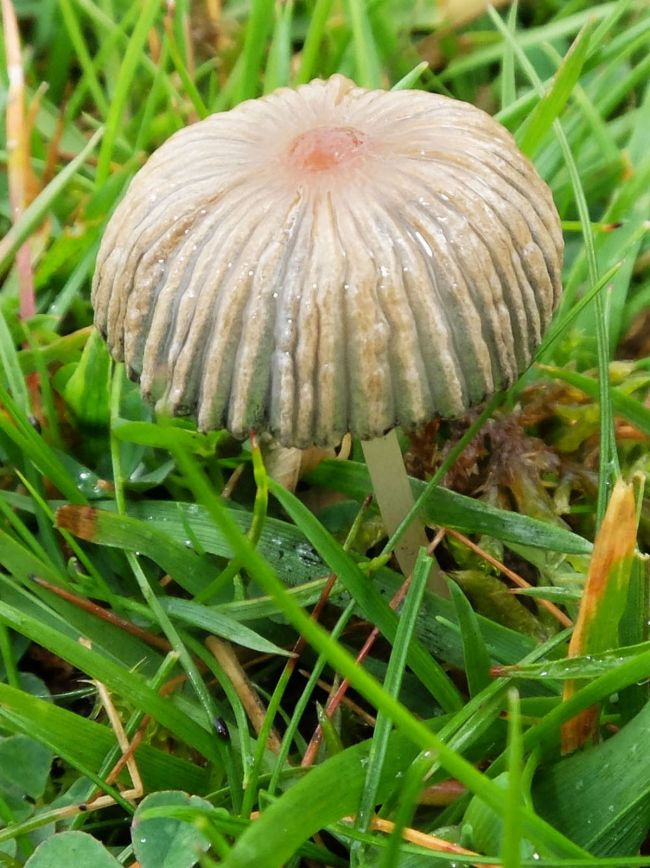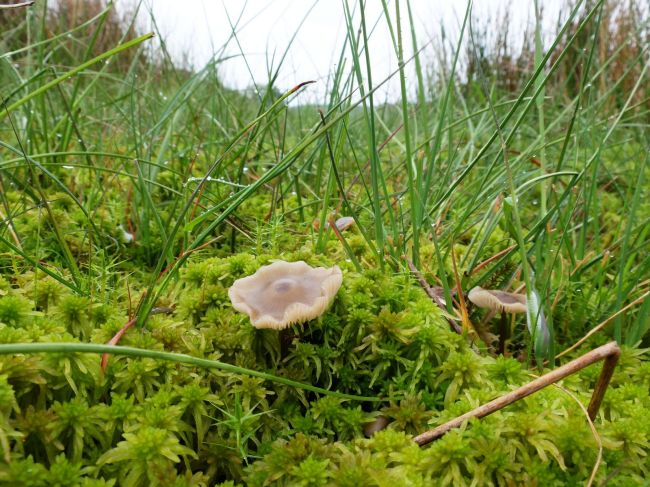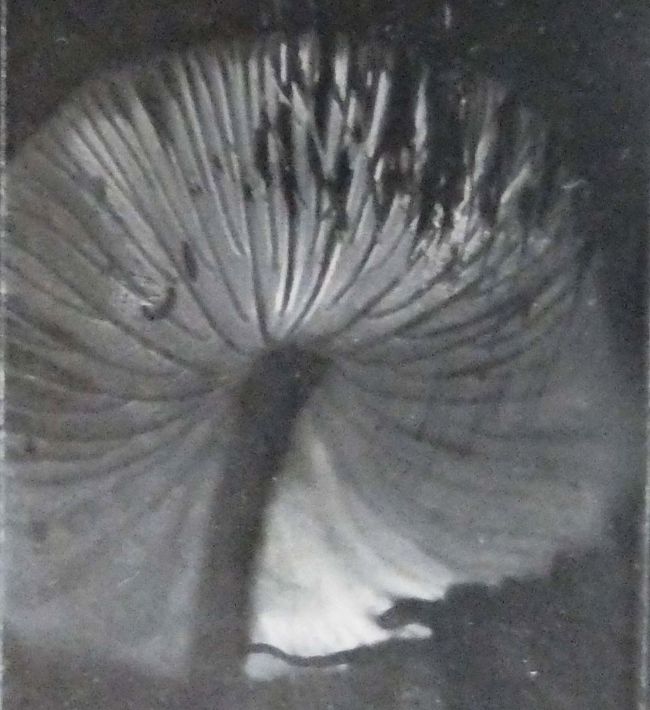Hi Claire,
Your blog on Kew lichens is fascinating
http://clairemilesblog.wordpress.com/2014/02/18/a-survey-of-british-lichens-at-the-natural-history-museum/
I collected some specimens from Hardwick in Derbyshire on Wednesday, as I want to brush up on lichens for our Fungi (and Lichen) Survey of the Longshaw Estate. I’ve recently examined the fungi collection held by Sheffield Museum, catalogued them, and put a few disconnected caps and stems together. Mostly they’re from the 1960’s, with many from Longshaw. I went to my first fungus foray there in 1969, so it was quite moving to see some of the preserved specimens with labels written by the leader at that time, Terry Bottomley, as well as some of the water colour paintings he made. The specimens are mostly freeze-dried I think, and some are spectacular, such as the Glistening Inkcaps. These would have turned to ink overnight, but have been perfectly preseved for half a century. I examined a small bit of Orange Peel Fungus, which was almost perfect microscopically, with oil drops in the spores and other structures such as asci and paraphyses more or less intact. But the spores didn’t germinate!
There are 82 collections of freeze-dried or air-dried fungi at Sheffield Museum, representing about 65 species, 40 from named sites, 57 with a museum reference number. The reference numbers may allow us to get more data on the specimens. A few labels were with the wrong specimen, and a few stalks and caps had been mixed up. Mostly the identifications looked OK. After half a century the collection was quite impressive.
We’re keeping a herbarium of fungi (and lichens now) from the Longshaw Estate. These are air-dried, placed in sealed plastic packets and then kept in a freezer for several months. After that they should, according to the Museum curator, be OK for a good while.
Good luck with your project and with the jobs threat at Kew. I’ve signed the petition.
Here are some pictures of the Sheffield Museum Fungi Collection:
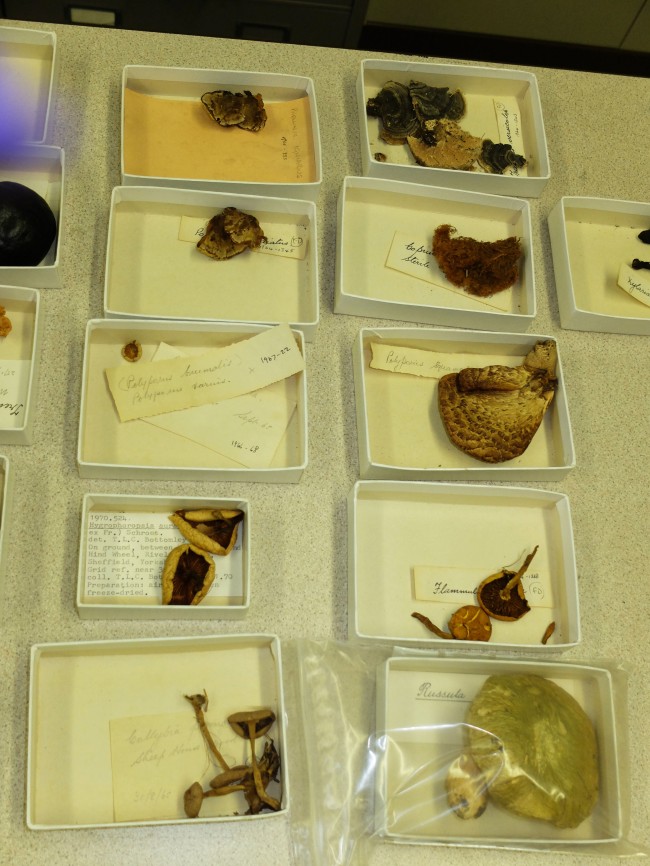
Part of the collection.
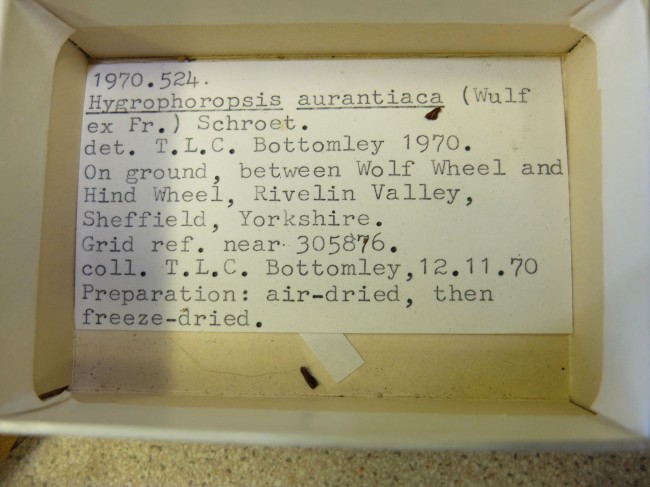
One label describes the preservation process.
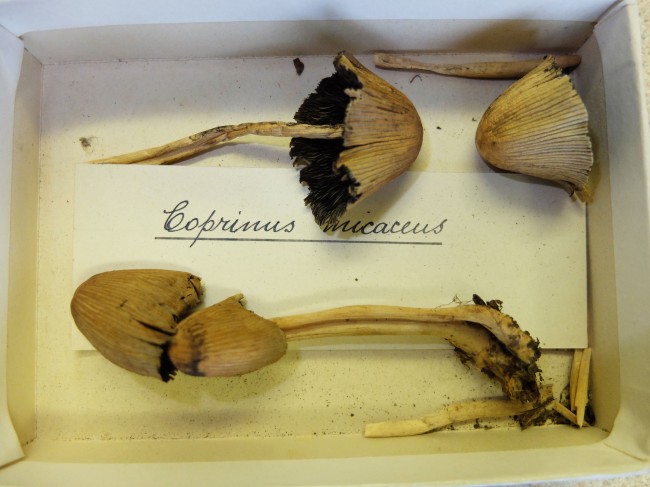
Glistening Inkcaps – Coprinellus micaceus, miraculously preserved – normally they would deliquesce to a pool of black Ink after a few hours when collected.
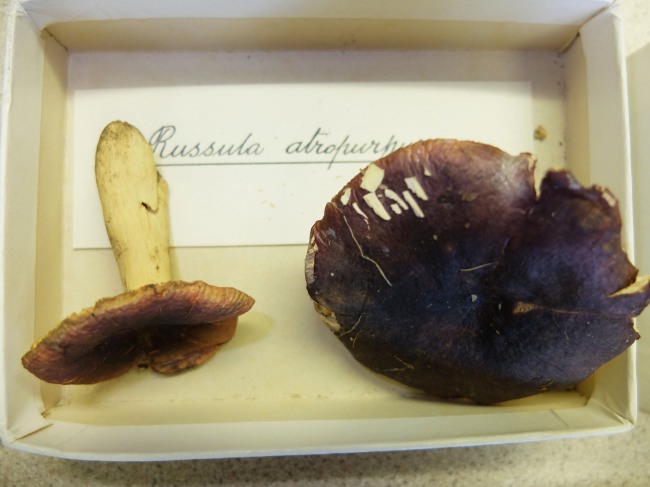
The fragile PurpleBrittlestem – Russula atropurpurea still beautifully coloured after 50 years or so.
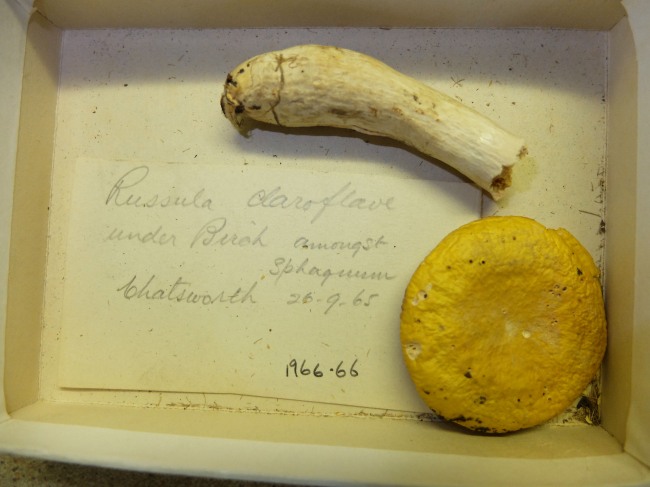
The Yellow Swamp Brittlegill, still brilliant yellow, from 1966.
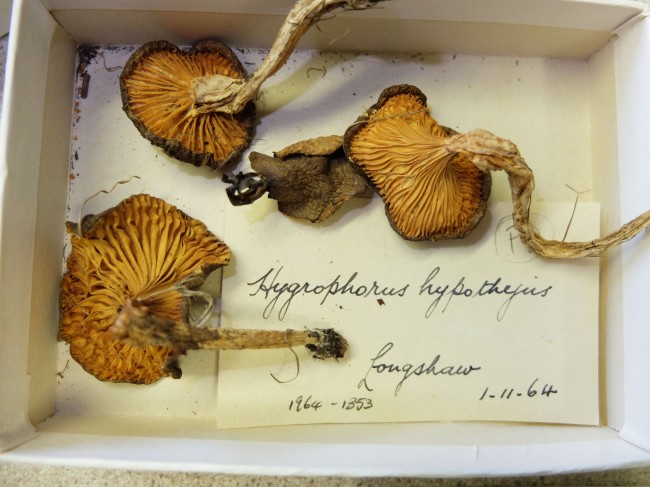
One of the many collections from the Longshaw Estate is the Herald of Winter, Hygrophorus hypothejus. Longshaw is a special place for Sheffield as it was bought by public subscriptions, mostly by Sheffield folk, in the late 1920’s and mid 1930’s, to save it from urban development. It has the best fungi of the Sheffield area. At the moment some of the most unspoiled parts are threatened by major rail developments along the Sheffield-Manchester line. We’ve been collecting fungi and other natural history records there since December, when we first heard of the plans.
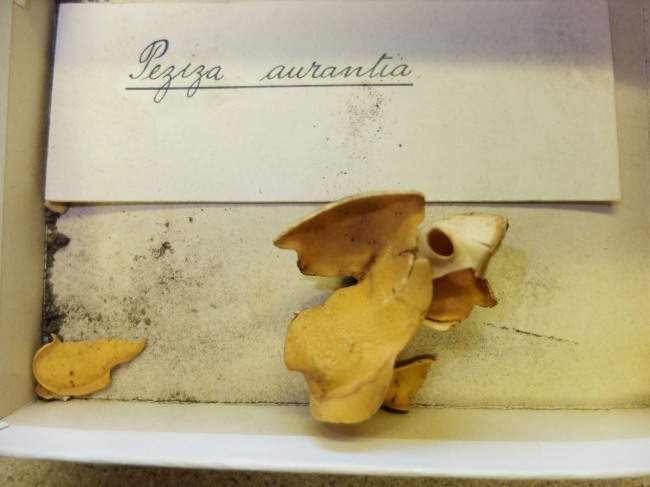
The Orange Peel Fungus, now renamed as Aleuria aurantia. Like lichens, many of the names from the specimens (1964-70) have been changed. The specimen has faded to buff from its original brilliant orange, so confirmation by microscopy would be useful.
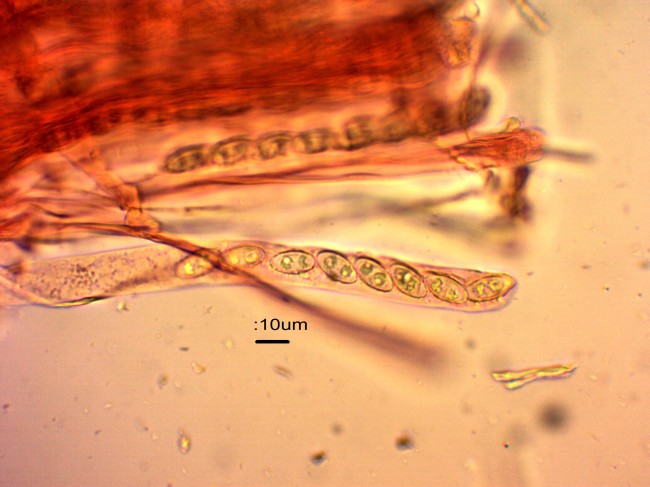
The curator allowed me to take a small fragment of the faded Orange Peel Fungus. Although the orange pigment had faded, the microscopy was impressive – even showing the oil-drops in the spores.
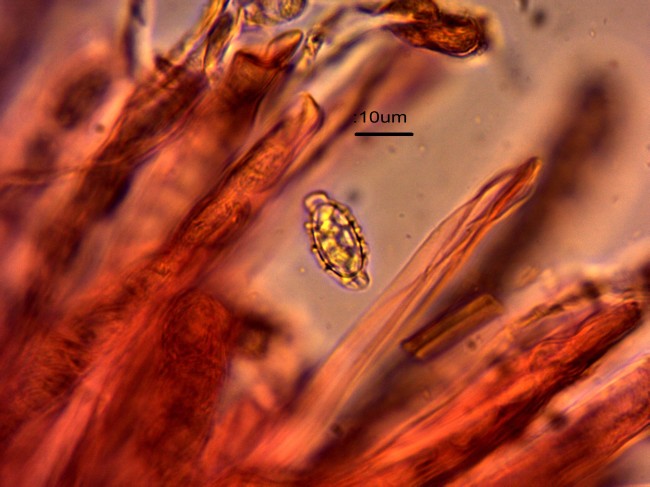
The reticulated ornamentation and size confirms the specimen as Aleuria aurantia (formally Peziza aurantia).
Best regards,
Steve Clements, Longshaw Fungi Recorder





